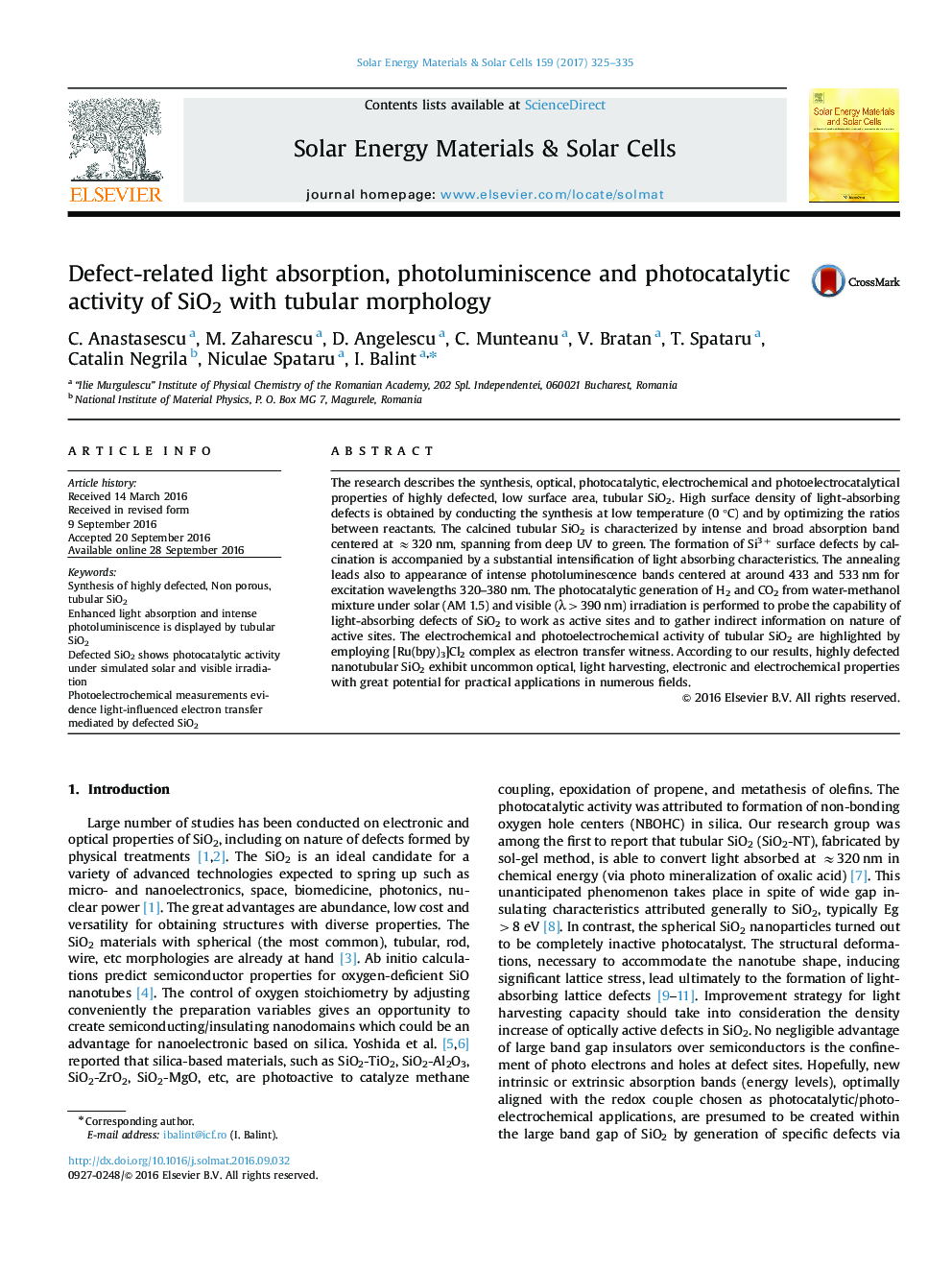| Article ID | Journal | Published Year | Pages | File Type |
|---|---|---|---|---|
| 6457513 | Solar Energy Materials and Solar Cells | 2017 | 11 Pages |
â¢Improved light absorption by highly defected tubular SiO2.â¢Defect-related intense photoluminiscence of tubular SiO2.â¢Part of absorbed light by SiO2 is converted into chemical energy.â¢Molecular O2 is activated by SiO2 lattice defects under UV irradiation.â¢Si3+ and associated defects are responsible for uncommon properties of silica.
The research describes the synthesis, optical, photocatalytic, electrochemical and photoelectrocatalytical properties of highly defected, low surface area, tubular SiO2. High surface density of light-absorbing defects is obtained by conducting the synthesis at low temperature (0 °C) and by optimizing the ratios between reactants. The calcined tubular SiO2 is characterized by intense and broad absorption band centered at â320 nm, spanning from deep UV to green. The formation of Si3+ surface defects by calcination is accompanied by a substantial intensification of light absorbing characteristics. The annealing leads also to appearance of intense photoluminescence bands centered at around 433 and 533 nm for excitation wavelengths 320-380 nm. The photocatalytic generation of H2 and CO2 from water-methanol mixture under solar (AM 1.5) and visible (λ>390 nm) irradiation is performed to probe the capability of light-absorbing defects of SiO2 to work as active sites and to gather indirect information on nature of active sites. The electrochemical and photoelectrochemical activity of tubular SiO2 are highlighted by employing [Ru(bpy)3]Cl2 complex as electron transfer witness. According to our results, highly defected nanotubular SiO2 exhibit uncommon optical, light harvesting, electronic and electrochemical properties with great potential for practical applications in numerous fields.
Graphical abstractHighly defected, non-porous, tubular SiO2 evinces uncommon defect-related properties such as enhanced light absorption, intense blue-green photoluminiscence, photocatalytic activity under solar and visible irradiation, electrochemical and photoelectrochemical response, put in evidence by redox cycle of [Ru(bpy)3]Cl2 complex. The interrelated optical, photocatalytic and electrochimic features are ascribed to Si3+ and to other associated surface defects formation during calcination process.Download high-res image (227KB)Download full-size image
